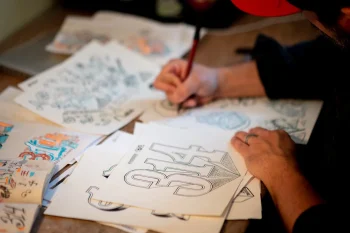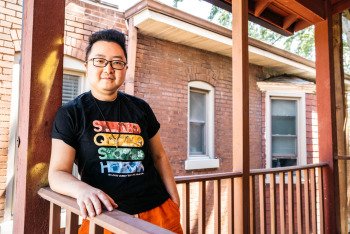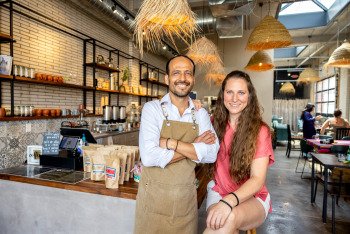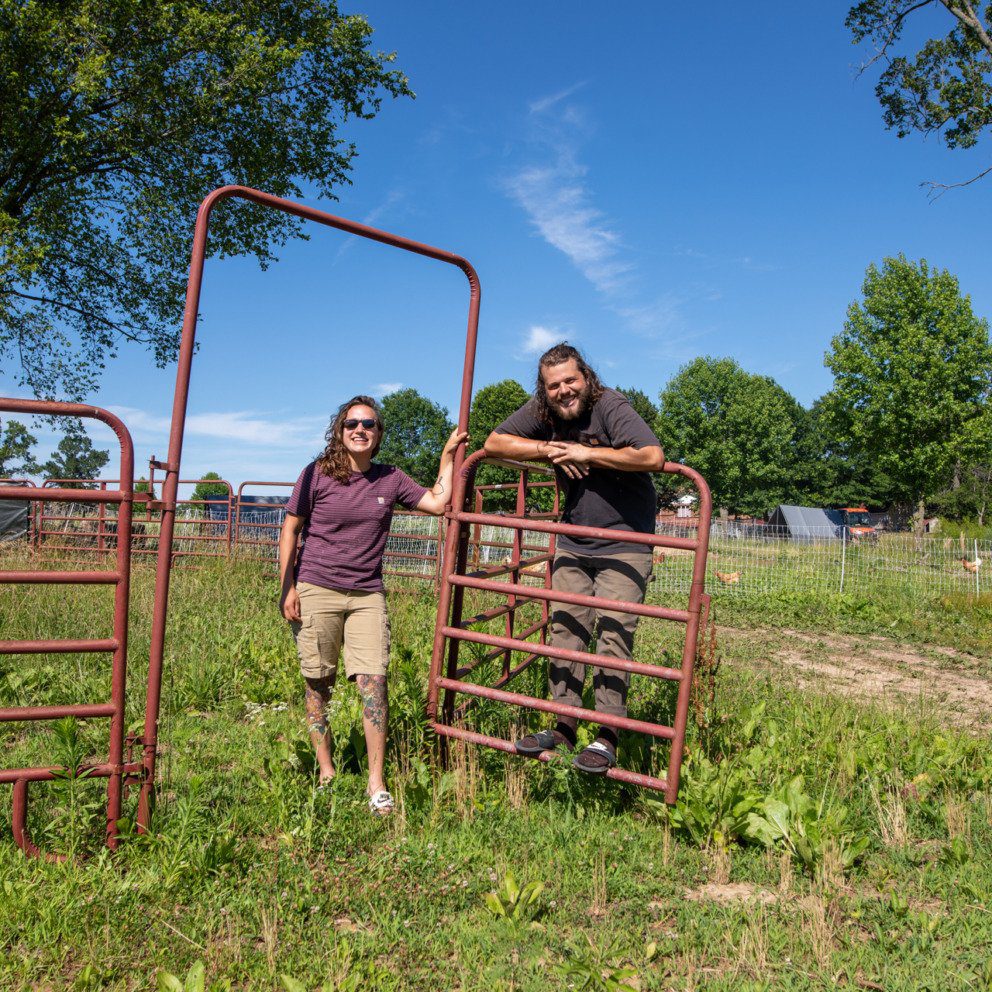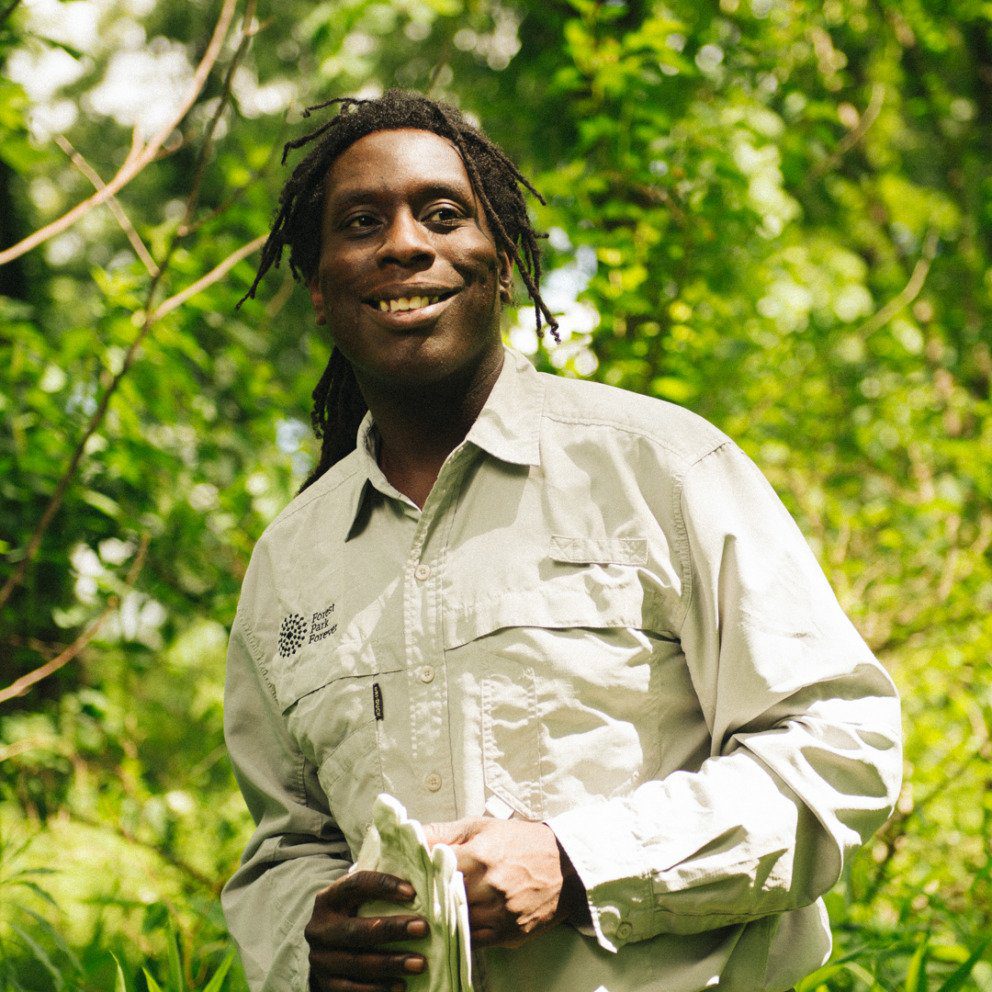Natural Wonders
St. Louisans find peace and purpose in parks and on trails throughout the region.
Since March 2020, many people across the St. Louis metropolitan area have found solace in nature. Whether that meant flocking to historic St. Louis fixtures such as Forest Park or venturing further out to destinations like Don Robinson State Park, Missouri saw a rapid increase in its residents stepping into the outdoors.
And for good reason. The transition of working in-person to at-home was a culture shock for most Americans. Keeping children entertained and educated was a struggle for parents. And the usual destinations for escaping and socializing, from movie theatres to restaurants, were no longer options.
So with stay-at home orders in effect during the spring of 2020, everyone was eager to just get out — for exercise, fresh air and a change of scenery. And for two local hikers, they found more than they expected on the trails.
One of them, Debbie Njai, stepped into the world of hiking for the first time shortly before the life-altering events of March 2020.
“I went on my first hike in August of 2019,” Njai says. “I was going through a lot personally, and hiking was something always in the back of my mind that I wanted to start, but I didn’t really know how to get started.”
With the help of a good friend who had outdoor experience, Njai says she was encouraged to go on her first hike at Castlewood State Park in Ballwin. While the trail was a brief 1.7 miles, Njai remembers feeling like the hike was exactly what she needed. The beauty of the park provided therapy, and so Njai began hiking every Sunday for the next 40 weeks.
“When I was hiking, I noticed a couple of things,” Njai says. “I didn’t see anybody else on the trail that looked like me. I was so in love with hiking, and I was trying to share it with people that I knew and looked like me.”
The other thing that she noticed was that her invitations to family and friends to join her were not met with enthusiasm. That’s when Njai realized hiking was a need for the community, not just her own network. The group Black People Who Hike was born.
Historically, Black people have been excluded from the conversation and representation of people who enjoy the outdoors. People of color were not allowed equally into the National Park system until the 1950s.
During that time, the National Park System had no regulations of its own regarding segregation in its parks. Instead, it abided by local laws and regulations of the states parks were in. In Northern states where segregation was not enforced, there were no segregation facilities on park grounds. But in states that were formerly part of the Confederacy, segregation was enforced. Of those 11 states, Missouri was included. Even if Black Americans were allowed inside national parks, there was no guarantee of safety, especially during the Jim Crow era.
“This doesn’t apply to all people of color, but Black people typically have this fear of spending time outside,” Njai says. “Majority of the parks that we visit are in rural areas where it may be unsafe to travel, or be out there alone, so that does limit our access.”
Providing the space and encouragement for Black people to begin hiking starts with community, Njai says. She believes having a group of people that represent one another creates a feeling of safety and trust. People have come to hike with Njai’s group and have realized that trails further away from the city can become a barrier. She says people tell her they’d never try hiking if they had to go it alone.
“In Missouri, 87 percent of Black people live in nature-deprived areas. So when you talk about access, it starts with where you live,” Njai says.
To combat this, Njai recommends the AllTrails app, where users can see parks and trails in their area and beyond, as well as locate groups such as Black People Who Hike.
“Try a short trail to start with, and then look on the app to find something super scenic,” she says. “Maybe it has a waterfall or nice overlook. And then, just create everlasting memories.”
Creating Black People Who Hike was a simple venture for Debbie Njai to find other Black people who enjoyed the outdoors like her. But the movement has created something much larger than a local group.
With nearly 30,000 Instagram followers, Black People Who Hike has evolved into a movement around the world. The group has expanded to include any and every outdoor activity, including kayaking, swimming, running, visiting pyramids in Egypt, and more.
The platform began with three followers. But each week, more people joined at a consistent rate for almost a year. When stay-at-home orders were announced, Njai made the pivot to virtual hiking sessions, eventually creating Black Hikers Week online, which included weeklong virtual events on Instagram. That was the moment that the page’s presence exploded, adding nearly 10,000 followers in one week.
But for Debbie Njai, the community she’s built was not about gaining followers. It started with a search for self and a need for calm in the chaos.
“I feel happy. I feel calm and at peace,” she says. “Hiking allowed me to find myself, and unapologetically be myself and walk in my purpose. I know that what I’m doing is exactly what I’m supposed to be doing, and I’m exactly where I’m supposed to be.”
Exploring St. Louis Parks
Mark and Stephanie Hampton were no strangers to the trails, having hiked in Iceland, Hawaii and for Mark, even Mt. Kilimanjaro — but with stay-at-home orders limiting their travel, they took it upon themselves to introduce their children to the world of outdoor adventures, and were surprised by the number of trails within a short drive from their home.
“We live in Creve Coeur, and had about three parks that we really loved,” Hampton says, “but then it expanded, where I would find other parks in Creve Coeur, then in Kirkwood and in Webster Groves.” Hampton would research and go a little further from home each time, and would tell her friends about the new park or trail she’d discovered, to the point that her friends dubbed her “the park lady.”
Hampton then started documenting parks through the Instagram account she created to help others find trails, exploreSTLparks. Hampton’s background as an educator came in handy when writing about the places she visited, including tips on parking, the best times of day to visit and information on what portions of the trail are paved or unpaved and if there are any creeks or water features — all things helpful to know before starting out on the trail, especially with kids in tow.
“I was amazed by all the parks I found,” says Hampton. “I’m a St. Louis transplant, but I’ve been here for six years now. It surprised me to realize how much there is to explore around us.”
In Missouri, there are more than 700 miles of trails. Some of the Hamptons’ favorites thus far are St. Francois State Park in Bonne Terre, where thousands of bluebells bloom each spring, and Shaw Nature Reserve in Gray Summit, where her daughters loved seeing the water lilies in August.
“Hiking just seemed like a natural thing for our family,” Hampton says. “It was something we could all do to bond more in nature, and teach our girls all there is to explore about the world right around us.”
And explore they have — at the time of this interview, Stephanie was days away from delivering her third child, and the family just completed their 90th trail together. And their park visits often branch out to other activities in addition to hiking. The Hamptons have kayaked and camped at Klondike Park in Augusta, watched park rangers feed elk and bison at Lone Elk Park in Valley Park and observed an archeological dig at Cahokia Mounds in Collinsville.
“It’s been really neat for us to get healthy and stay active prepping for our next pregnancy,” says Hampton. “I had preeclampsia with my youngest one, so for me, it’s getting my girls out, getting my blood moving and staying healthy.” Hampton says her OB-GYN thinks that her near-daily hiking through this pregnancy has helped prevent her from having preeclampsia again. And for Hampton, the benefits of hiking go beyond the physical.
“I’ve found that when I stay in all day, I have more anxiety and I can start feeling down,” says Hampton. “But when I get outside, it’s like a whole new world. And that breath of fresh air brings a change in attitude.”
“It’s incredible what nature can do for our souls.”
Join the Story
- Check out AllTrails’s list of the best trails in St. Louis.
- Read Terrain magazine to learn more about outdoor recreation in St. Louis and the Midwest.
- Find a Missouri or Illinois state park near you.
- Search for a greenway to explore.
